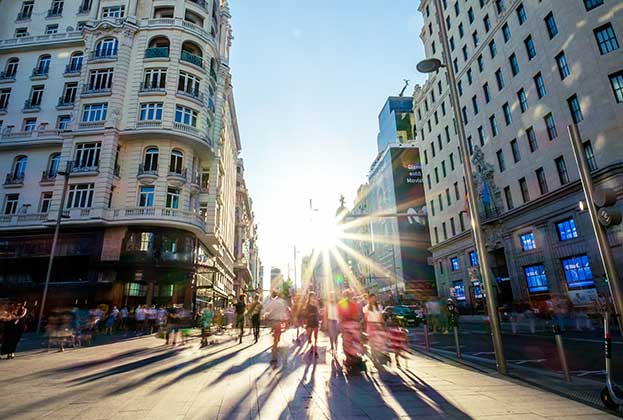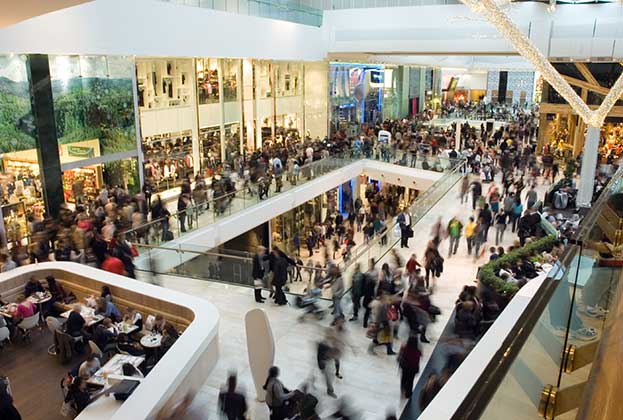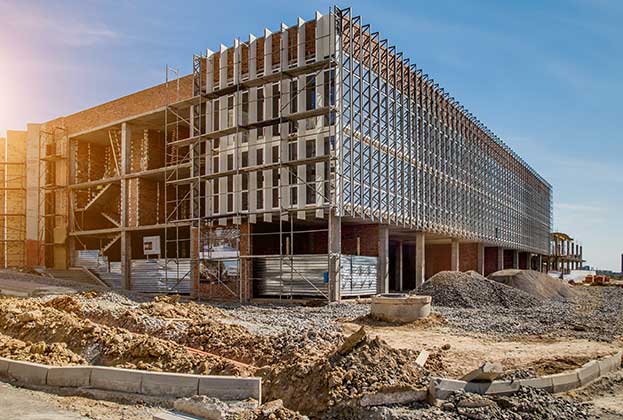Rising footfall and falling vacancy; retail parks continue to out perform
The challenges to consumer spend and subsequent stronger performance in the discount and value retail segment has proved beneficial to retail parks. The convenience of these locations to consumers, particularly in those markets where agile working has become the norm post-pandemic, has also come into play. This is evidenced by the fact that the most profitable retail parks are typically anchored by food stores, spend at which is often insulated by macro-economic headwinds as it is an essential spend category. It is also a retail sector where the online penetration rate is much lower compared to other parts of the market.
Consequently, retailers with a focus on essential product categories and value have continued to drive footfall to retail parks across Europe. UK footfall levels remain at parity with those seen pre-Covid, peaking over Easter weekend at 4.5% above the levels seen at the same time in 2019.
From a retailer's standpoint, retail parks offer competitive cost-effective operations, including lower rent and service charges than other retail formats
Georgia Ferris, Analyst, European Research
The strength of performance and subsequent growth ambitions of retail park operators has resulted in a decline in voids across Europe, with the UK dipping as low as 4.4% this year. However, if the available space that is no longer fit for purpose and needs to be repurposed is excluded, the vacancy rate is actually closer to 2.1% or just 81,700 sqm of available space – less than two years of supply. It is a similar picture across most of Europe and is reflected in the strength of rental growth over the last five years.
Dublin, Vienna, Amsterdam and Lisbon have all seen significant growth of 14% or more in prime rents over the last five years. In the case of Dublin, Vienna and Amsterdam, this is largely a consequence of low voids, exacerbated by a restriction in new stock. For Lisbon, it is more reflective of a market that is still emerging and gaining in popularity with consumers and occupiers alike. From a retailer's standpoint, retail parks offer competitive cost-effective operations, including lower rent and service charges than other retail formats.
There is still a positive story for those markets where rental growth has been absent over the last 12 months, or where we have seen rental declines, particularly when benchmarked against other retail segments. For example, prime retail park rents in London are down a total of 6% over the last five years; in contrast, prime rents on London’s Oxford Street are down 40% over the same period. This highlights the relative resilience of the former particularly in light of recent events.

A restricted development pipeline will help to drive further rental growth
Retail park stock across Europe is projected to total 42.7 million sqm by the end of 2023. Stock has expanded by an average annual rate of 12% over the last five years, but this expansion has been slowing, with a 2% increase recorded for 2023. Despite the incremental increase in supply across the continent, various markets are at varying evolutionary stages.
Sweden (0.33 sqm), UK (0.16 sqm), Netherlands (0.14 sqm), Austria (0.14 sqm) and Ireland (0.14 sqm) all have the highest retail warehouse supply on a per capita basis – above the European average at 0.10 sqm per person. Both annual and five-year growth in supply in these more mature markets has been subdued. But this is not reflective of weak demand as evidenced by the strength of rental growth in some of these markets; Dublin has seen prime retail park rents increase almost 15% over the last five years. Rather, the restrictive development pipeline is a response to a combination of reasons.
Firstly, the demand for large plots has proved difficult to satisfy when development space is at a premium and is often competing with the ambitions of the residential or logistics property market. Furthermore, build costs have also proved to be prohibitive across a number of these more mature markets, and as a result, many retail park developments are now for smaller schemes. The 3.4% growth in UK stock over the last five years has almost exclusively been through the expansion of existing schemes, allowing landlords to drive greater value from their existing portfolios.

New high growth, undersupplied markets, emerging
Portugal, Finland, and Denmark comprise a group that epitomises emerging markets, with the lowest overall stock levels in Europe and below-average supply per capita. This relative under-supply on a per capita basis presents an interesting development and investment opportunity, one that is starting to be realised when considering historical trends. For example, expansion over the last five years in these markets has been in excess of 15% when compared to 2018, albeit this does reflect growth off a low base.
Poland has been one of the fastest growing markets in stock terms having seen growth of 84% over the last five years. As a result, it is relatively well supplied in terms of total quantum of stock, coming second to Spain with 2.4 million sqm of stock. However, Poland continues to have one of the lowest densities of retail park stock per capita at 0.06 sqm. The more mature markets of the UK, Netherlands, Sweden, Austria and Ireland have more than doubled this, with stock per capita averaging 0.18 sqm. While a further 900,000 sqm of new space is expected to be delivered by 2026/2027 into Poland, helped in part by the relative ease developers can source suitable out-of-town locations, it will only have an incremental impact on per capita supply increasing it to 0.08 sqm per capita.
Read the other articles within European Retail Market below
.jpg)



.jpg)


